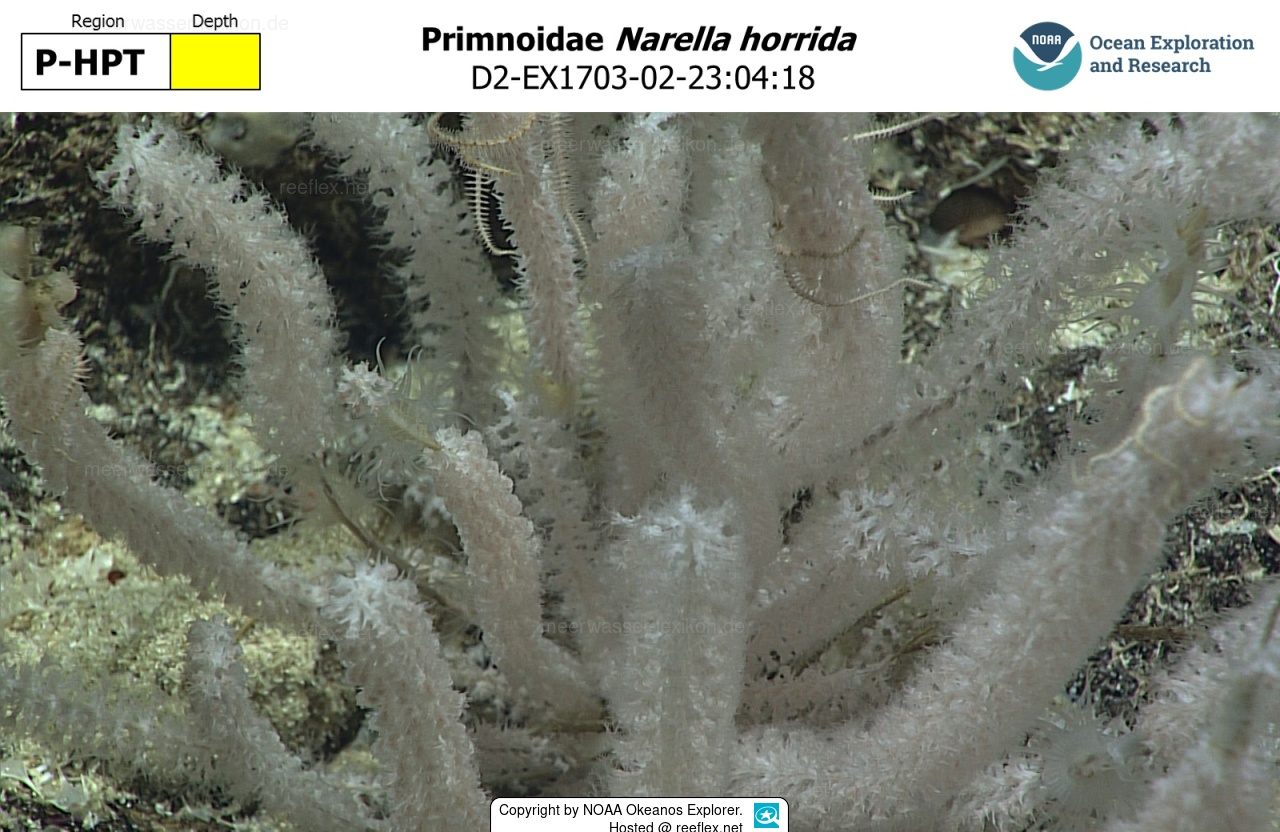Info
Narella horrida is so far only known from the Kei Islands, Komodo, Tokelau and west of Satsuma, Japan.
The longest of the gorgonian's individual branches are about 10 cm long, and overall it forms a small, bushy colony.
As with many other deep-water gorgonians, there is polychaete commensalism in Narella horrida.
The photos of the coral were taken with a cable-guided underwater vehicle, and samples were collected in the same way.
How is actually the size of a deep water coral, or its polyps measured in a lightless world?
Before collecting, video recordings are made of the specimens at close range (with red lasers and a reference to scale), recognizable by red color dots
Longer close-up photos can be taken to show the tentacle feathers (which can often be counted if the light is right) and to see
how conspecifics living on the coral might behave.
In practice, however, it has not been possible to get more than 15 minutes of close-up images, probably because the photons from the light heat the polyps.
As a result of the heating, the polyps begin to close or show other signs of stress.
Video of the surrounding habitat, including small-scale geological features, surface substrate type, macroassociations, and other sedentary Fauna are also recorded.
More photos of the coral can be seen here: https://invertebase.org/stri/collections/individual/index.php?occid=6174058&clid=0
Synonym: Narella irregularis (Kinoshita, 1907)
The longest of the gorgonian's individual branches are about 10 cm long, and overall it forms a small, bushy colony.
As with many other deep-water gorgonians, there is polychaete commensalism in Narella horrida.
The photos of the coral were taken with a cable-guided underwater vehicle, and samples were collected in the same way.
How is actually the size of a deep water coral, or its polyps measured in a lightless world?
Before collecting, video recordings are made of the specimens at close range (with red lasers and a reference to scale), recognizable by red color dots
Longer close-up photos can be taken to show the tentacle feathers (which can often be counted if the light is right) and to see
how conspecifics living on the coral might behave.
In practice, however, it has not been possible to get more than 15 minutes of close-up images, probably because the photons from the light heat the polyps.
As a result of the heating, the polyps begin to close or show other signs of stress.
Video of the surrounding habitat, including small-scale geological features, surface substrate type, macroassociations, and other sedentary Fauna are also recorded.
More photos of the coral can be seen here: https://invertebase.org/stri/collections/individual/index.php?occid=6174058&clid=0
Synonym: Narella irregularis (Kinoshita, 1907)







 NOAA Okeanos Explorer
NOAA Okeanos Explorer














